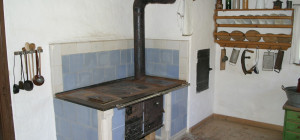 No matter where you go in the world, you will always be exposed to new and exciting home design trends. While some may vary depending on your precise location, others remain universally popular and have a huge influence on the way in which home-owners present their living space. While it easy to understand the appeal of a stylish and well-presented home, however, it is important not lose to become too preoccupied with aesthetics and finishing of the property.
No matter where you go in the world, you will always be exposed to new and exciting home design trends. While some may vary depending on your precise location, others remain universally popular and have a huge influence on the way in which home-owners present their living space. While it easy to understand the appeal of a stylish and well-presented home, however, it is important not lose to become too preoccupied with aesthetics and finishing of the property.
The reason for this is simple, as successful home-improvement also relies on a series of fundamental and relatively mundane tasks must be executed correctly. This is especially true with remodelling staples such as tiling, for example, as even the most lavish and expensive floor tiles in the world cannot improve the visual appeal of your home unless they are laid securely and in a professional manner. It is important to bear this in mind at all times, as otherwise you run the risk of prioritising style over substance.
With this in mind, what practical steps can you take to execute a durable and professional-standard tiling job? Consider the following:
1. Dry-fit your Tiles and Carefully Centre the Design
If you invest in patterned tiles, it is crucial that you dry-fit these to correctly establish the pattern. Failure to do this could cause the layout of your tiles to be off-centre, which would in turn ruin the entire aesthetic of the room. As a starting point, run a utility knife along the grout lines to cut the sheet tiles, taking great care to ensure that they match up to the inlay tiles as you carefully position and dry-fit them. Once this has been completed, you should take a tape measure and carefully measures the room in question, as this will help you to determine the centre of the space and provide you with a starting point for the project.
2. Mark the Design and Carefully Begin Work
With the preparations now take care of, you can begin to mark the design of your layout and start work in earnest. You will initially require a pencil to lightly but visibly mark the corners of each tile, before collecting them from their dry-fit position and gathering them in a single space. Then make chalk lines between each corner, as this will help to establish a box for the outer field tiles. Remember to adopt a considered and careful approach when marking your tiles and outlines, as this will go a long way to guaranteeing an accurate and symmetrical finish. After this, you can start to mix your tile grout and adhesive to a thin-set, reliable consistency, before allowing it to rest for 10 minutes and spreading it the floor area using a square notch trowel.
[youtube https://www.youtube.com/watch?v=1-i0S_6oVSE]
3. Set Border, Inlay and Field Tiles
You are now ready to lay your tiles, starting with the border and inlay tiles. After mixing and applying your adhesive, use your markings to set the inlay tiles in place, using a margin trowel to confirm their final position. By starting from the central point of the room, you can effectively work outwards and ensure that each tile is laid in its ideal location. Once you begin to reach the wall, be sure to use a wet saw and cut the outer-field tiles to size. This will cut your tiles in even, straight lines, and allow you to finish the project neatly and negate the issues posed by uneven floors or radiators.
The information in this article was offered by Tiles 4 All, specialised in the sale of products and accessories nationwide.




![Interior Design Ideas-Hues for Your Home [Infographic]](https://lerablog.org/wp-content/plugins/wp-thumbie/timthumb.php?src=http://lerablog.org/wp-content/uploads/2015/03/fit-my-bedroom-hues-for-your-home.png&w=300&h=140&zc=1)


